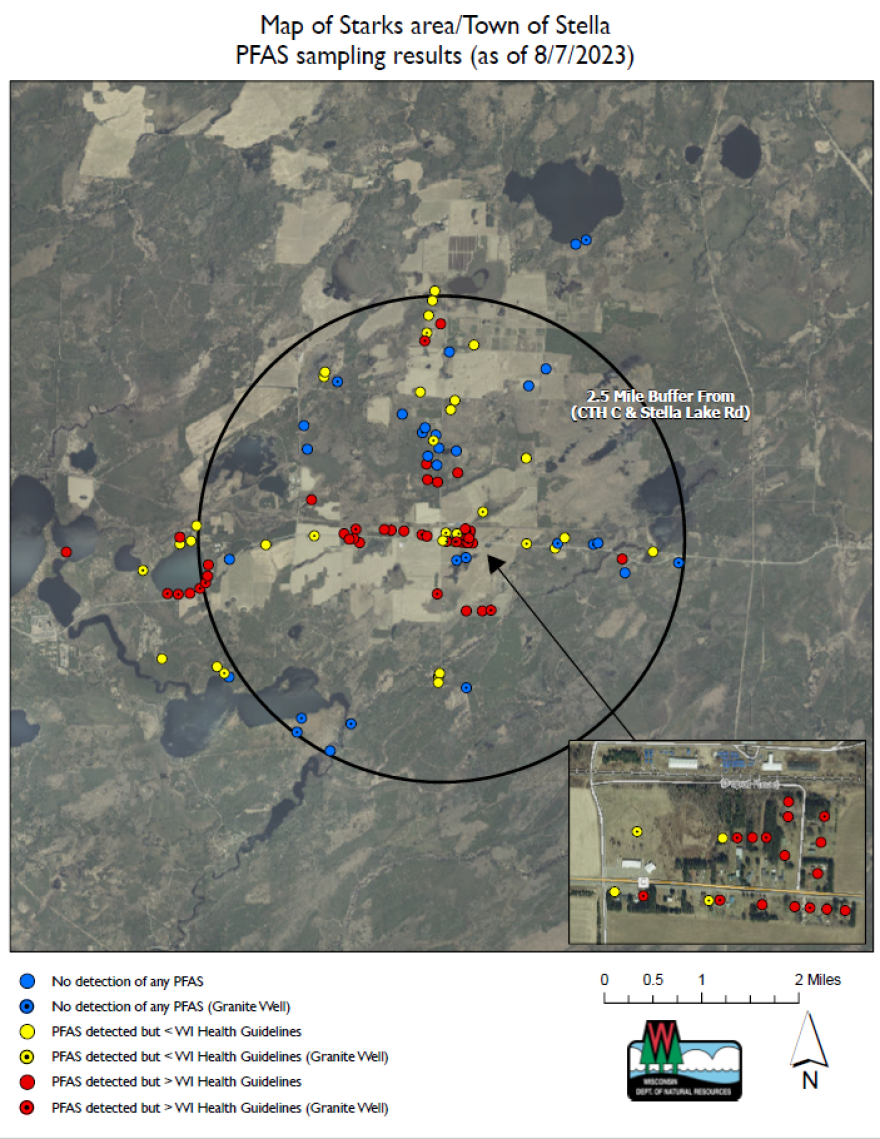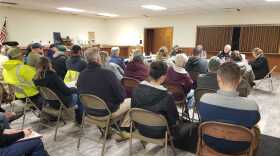DNR test results from the Rhinelander Papermill show levels of PFAS the DNR considers low.
The sludge was tested in July as a possible source of contamination for the high levels of PFAS being found in private wells in the Town of Stella in Oneida County.
PFAS testing for sludge from the Ahlstrom Munksjo Papermill in Rhinelander shows 1.67 parts per billion [ppb] for PFOS and 0.342 ppb for PFOA.
The DNR told WXPR, “Based on the results of July’s sampling and the Interim Strategy, the DNR would not have suggested restrictions in land application for Ahlstrom’s industrial sludge.”
There are currently no state or federal standards for PFAS in biosolids.
The DNR does have an interim strategy for land application of it. The agency said it was “developed using the best information available.”
It does allow for the spreading of sludge with PFAS levels between 20 and 150 ppb with different levels of restrictions and monitoring.
At or above 150 ppb, the interim strategy calls for alternative treatment or disposal of biosolids besides land application. That’s close to Michigan’s standard which previously set its threshold at 150 ppb. It reduced it to 125 ppb of PFOS in biosolids in 2022.
Jared Hayes says that an issue with biosolids being spread on the landscape is that continued use can cause PFAS levels to build up over time and then leach into the ground and surface water.
Hayes is a senior policy analyst at the Environmental Working Group.
“It's hard to say without knowing the exact history of how much biosolids have been applied, how long it's been there, if there are other fields around that's also contributing. Because if it's on every field and in the area, and then it's done 10,15 years, it could build up significantly in the soil and groundwater over time,” said Hayes.
The DNR said that the results of this latest testing can’t be used to determine if past sludge spreading was a cause of contamination for the PFAS found in private wells in Stella.
At its last town hall meeting in Stella, the DNR said one of its main priorities is making sure the area isn’t being further contaminated. The DNR told people it was also looking into the records of past sludge spreading in the area.
At this time, the DNR does not know the source of contamination. Some residents with contaminated wells are pointing to the paper mill. They’ve filed a lawsuit against the mill’s current owners and 3M for providing the chemicals.
Researchers are still learning about PFAS in biosolids. Without any standards, it can be hard to know what actions to take.
The U.S. Environmental Protection Agency (EPA) is currently developing a risk assessment to better understand the potential public health and ecological risks associated with PFAS in land-applied biosolids. DNR says this information will be used to inform decisions on the need to regulate biosolids and industrial sludge in the future.
Hayes says the EPA is expected to have the risk assessment by the end of 2024.
In the meantime, communities are regularly discovering contamination in public and private wells.
Hayes this is particularly concerning for rural communities that rely on private wells that aren’t tested regularly like public water supplies.
“They might not know that PFAS has been building up over time. It's important that if you think that there might be PFAS, if you have had a lot of biosolids applied to land near you, to get your water tested, get a filter on your water to make sure that you're not being exposed at really high levels that we're seeing across the U.S.,” said Hayes.

Right now, people within the DNR’s sample area and have levels higher than 20 ppt can get bottled water provided by the state.
The DNR is also encouraging homeowners to apply for the well compensation program to build deeper, better-protected wells in hopes that will cut down on the contamination levels enough that filters could work.
Hayes believes the best solution is to prevent these chemicals from getting into the environment in the first place.
He referenced a study out of the state of Michigan that showed if you put filtration on the polluters upstream from wastewater treatment plants, they could cut PFOS levels as much as 99%.
“It's really important that we be limiting the amount [of PFAS] that is being entered into the environment in the first place. To put these controls and limitations on the polluters, to put these controls and limitations on those putting these toxic forever chemicals into our waste streams in the first place because private citizens shouldn't be having to foot the bill to filter these things out,” said Hayes.
WXPR is following up with the DNR to learn what comes next in looking for a source of PFAS contamination in Stella.
We’ll update as we learn more.








